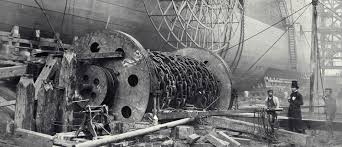Our autos are held together with a bewildering cluster of fasteners– a wide range of stray pieces, studs and washers. They may not be as spellbinding as the segments they append to each other, yet don’t underestimate them. A chain is just as solid as its weakest connection, and flawed clasp have the ability to sideline whole vehicle. The stakes turn out to be much higher at track speeds. With regards to race-prepared equipment, ARP is one of the greatest names in the business. The organization serves customers at each level of motorsports, as far as possible up to the present driving Formula 1, NASCAR and NHRA groups. Visit https://wolfchestershop.com.au/chemicals/cleaning/

What do Fasteners and Springs Have in Common?
To accomplish preload or bracing power, a latch ought to be extended a deliberate sum. An appropriately introduced latch works like a spring: The subsequent &bounce back& applies clipping power. An average 3/8-inch-breadth bar jolt made of 8740 chrome moly should be extended around 0.006 inch to accomplish a 10,000-pound cinching power. Also, similar to a spring, on the off chance that you don’t pull it exceptionally far, there’s little bounce back; on the off chance that you pull it excessively, it won’t come back to its unique length and shape– and will flop in benefit. Fasteners are available in different industrial supplies in Melbourne.
Preload Scatter and How Can You Prevent It?
When you apply torque to a latch, a great part of the vitality is used on beating, rubbing in the strings, any surface that is bearing heat and, in particular, the ointment itself. For most high-preload applications like chamber heads, principle tops and interfacing bars, clasp lube independent from anyone else is adequate. On the off chance that the jolt or stud is &wet&– implying that it juts into a water passage– then you’ll need to utilize a sealer.
What’s more, for a few applications, similar to flywheels, grasps and ring gears, most racers want to utilize Loc-Tite or a comparable anaerobic paste. In the event that you wish to stick to this same pattern, the tech group at ARP unequivocally prescribes the accompanying technique: Consecutively secure all latches by torqueing the required level to start with, utilizing oil as the ointment. Next, expel and clean the main clasp and string. At that point, apply Loc-Tite and speedily re-torque the dash before proceeding onward to the following one. Why this technique? Since a gathering of clasp is fixed, the anaerobic paste sets up rapidly and can begin to solidify before the coveted torque is connected to the last ones– which at that point throws off everything.